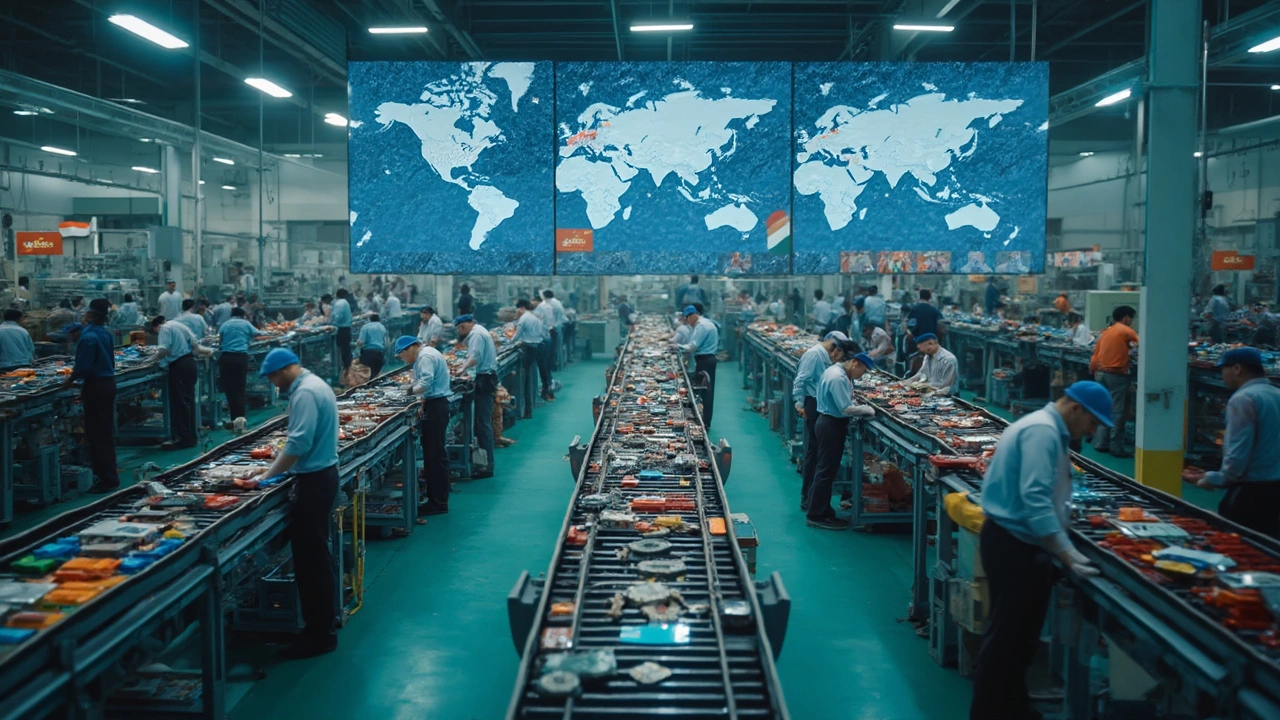China’s Manufacturing Power: What Makes It Tick?
If you’ve ever wondered why most gadgets in your hand were built in China, you’re not alone. The answer isn’t a mystery – it’s a mix of scale, skill, and smart policies that keep factories humming around the clock.
First off, China’s workforce is huge. Millions of workers can switch from assembling smartphones one day to producing solar panels the next. That flexibility lets businesses react fast to market shifts, and it keeps production costs low. Low labor costs aren’t the only trick, though. The government has invested heavily in modern factories, robotics, and a reliable power grid, so factories rarely shut down because of power cuts.
Why China Leads in Electronics
Electronics are China’s crown jewel. From tiny chips to massive smart‑home hubs, the country has built an entire ecosystem that supports every step of the process. Suppliers of raw materials sit next to component makers, and logistics companies are right on the same block. This proximity cuts shipping time and reduces errors.
Another boost comes from the “supply chain hub” model. When a company wants to launch a new phone, it can source parts from dozens of Chinese firms in days, not weeks. That speed gives brands a competitive edge and helps them roll out fresh models faster than rivals elsewhere.
China also encourages R&D through tax breaks and grants. Many tech giants set up research labs in cities like Shenzhen, turning the region into a hotbed for innovation. The result? New manufacturing techniques, better product quality, and lower defect rates.
What the Future Holds for China’s Factories
Even with all its strengths, China’s manufacturing scene faces challenges. Rising wages mean companies must become even more efficient. That’s why you see a surge in automation and AI‑driven quality checks. Robots are taking over repetitive tasks, freeing workers for higher‑value jobs like programming and maintenance.
Environmental rules are tightening, too. Factories now need to cut emissions and manage waste better. Many have upgraded to greener energy sources and cleaner production lines, which is good for the planet and helps them stay competitive in markets that care about sustainability.
Finally, the global trade landscape is shifting. Some companies are spreading production across multiple countries to avoid tariffs. Still, China’s depth of expertise and its massive supplier network make it hard to replace completely.Bottom line: China’s manufacturing might evolve, but its core strengths—massive skilled labor, integrated supply chains, and strong government support—keep it at the top of the global production ladder. Whether you’re a buyer, a supplier, or just curious, understanding these forces helps you see why the next gadget you buy probably started its journey in a Chinese factory.

Manufacturing Capital of the World: Who Holds the Crown in 2025?
Ever wondered which country actually leads the world in manufacturing? This article unpacks where the world's goods come from, why certain countries dominate, and what government schemes drive the industry. You'll see how policies shape manufacturing powerhouses and what other contenders are doing to catch up. With practical insights and real-world examples, it gives a fresh look at the global manufacturing race.
